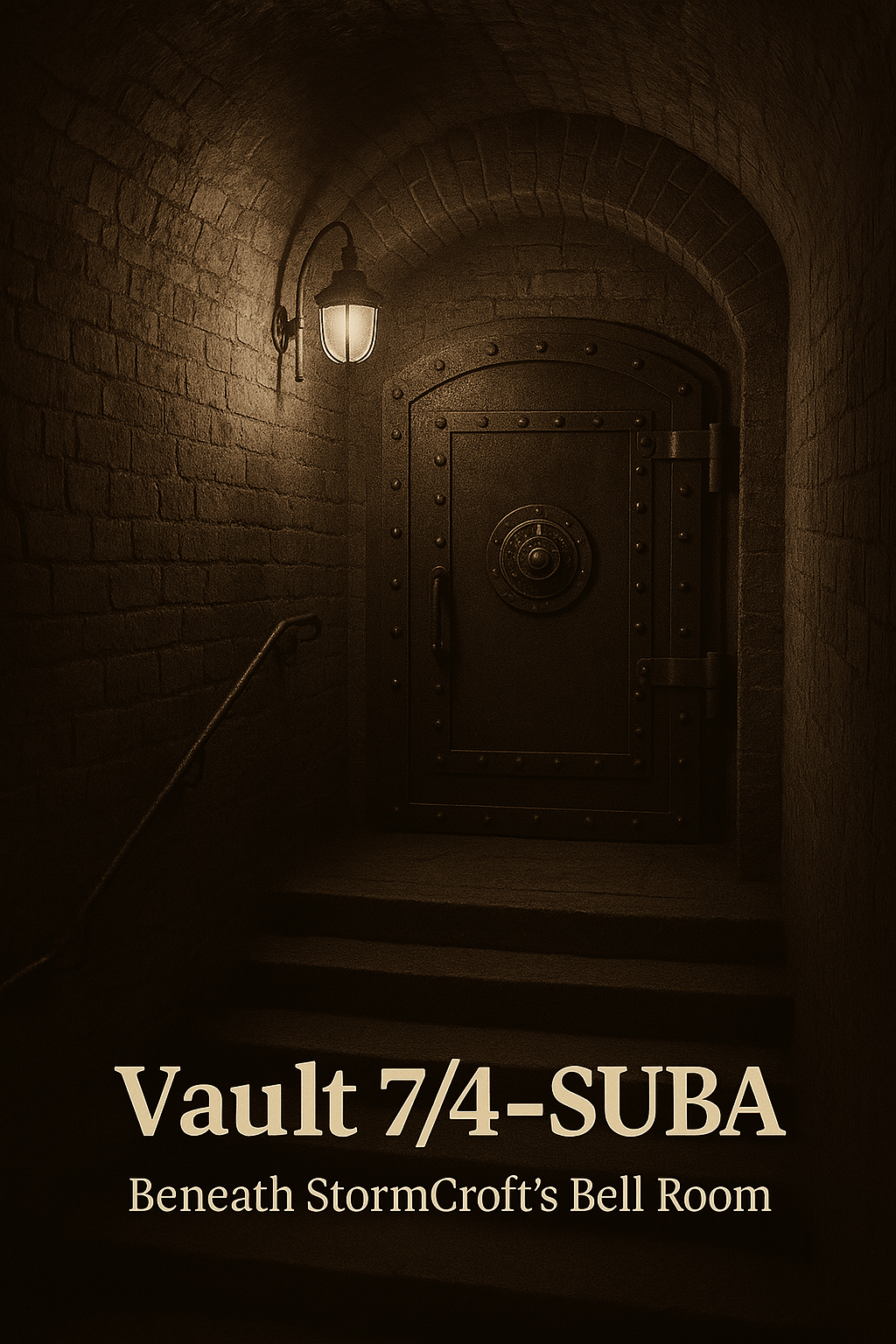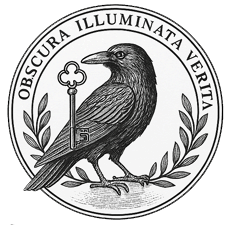“A document you don’t open. You remember it open.”
— attributed to Dr. Abram Finch

A rare photograph of Dr. Finch seated with the bound volume known as The Third Rail — a classified StormCroft document theorised to link harmonic transit fields with personal memory displacement.
This device masqueraded as a bound engineering manual, but when left in proximity to active Loop machinery, the pages rearranged themselves, revealing hidden schematics. Only Finch and an unnamed assistant could read it without discomfort. In 1983, a copy surfaced in a public library in Bristol, entirely blank.
“The book writes when it knows who’s asking.” – Internal Memo, 1976
Origin & Description
The Third Rail is the informal name given to a single-bound manuscript believed to have been written in the early 1880s by Dr. Abram Finch, StormCroft’s leading figure in neuro-resonance and harmonic field research. The title appears nowhere on the spine, nor on the first page — it is mentioned only once, handwritten on the inside back cover in fading red ink.
Bound in untreated calfskin and measuring just under 22 centimetres wide, the book contains 147 pages, most of which are filled with tight, slanted script, figures, field diagrams, and marginalia in several inks and hand styles — though all reportedly belonging to Finch.
The term “Third Rail” is never defined directly. However, scattered annotations suggest it refers to a hidden resonant layer—not of electricity, but of memory infrastructure running parallel to physical experience. In Finch’s view, there existed a third form of signal beneath emotion and thought, something older and unfinished, still active in human cognition.
He believed it could be reached. Possibly travelled through.
Content Highlights
Though highly fragmented, the book contains:
-
Field diagrams for spatial memory extraction
-
Instructions for building a device called the Sleeper Fork
-
Glyphs reportedly “generated” by the mind during unconscious resonance
-
Notes on “looped chronology” and “unread messages from people not yet met”
-
Warnings not to view certain diagrams in mirrors
One page appears entirely blank until exposed to a low tone. Staff exposed to this page reportedly experienced a “recurring familiarity with locations they’d never visited.”
Another entry reads:
“Some memories are waiting for a body to belong to.”
Effect on StormCroft Personnel
The manuscript’s influence spread far beyond Finch’s immediate team.
-
Engineers in Vault 3 began reporting tools returning to their benches before being used.
-
Archivists developed the habit of opening filing drawers and finding documents they remembered deciding not to file.
-
Several CroftNet staff in the late 1970s cited “Third Rail interference” as the reason for unrequested file delivery, which turned out to contain plans for systems not yet invented.
Staff exposure led to:
-
Dizzy spells linked to “proximity déjà vu”
-
Recurrent phrases appearing in dreams, identical across multiple people
-
A known “rail hum” — a low ambient tone at 9.31 Hz, occasionally heard in sealed corridors
-
A technician who rewrote a maintenance report in backwards Latin — though he had no classical training
Containment and Suppression
By 1890, the manuscript had become the subject of concern. Three versions of the book were allegedly created:
-
The original, handwritten by Finch
-
A partial transcription (now lost)
-
A third, rumoured to have been copied by someone who read it once and never spoke again
The original was locked in a lead-lined vault known only as Box 7/4–SUBA and classified under Echo-Redact Protocol. No authorised personnel were allowed to view it after 1903 without full temporal clearance.
Dr. Abram Finch died less than a year after the final entry. His last recorded words, scribbled in a margin of the book, were:
“It moved through me. I only hosted it.”
The Broader Impact on StormCroft
The Third Rail concept began to appear in other parts of StormCroft infrastructure:
-
Loop mechanisms that refused to reset unless unseen
-
Locks that responded to intent more than key
-
Dream-induced schematics that solved problems not yet encountered

Sepia-toned photograph of the sealed vault believed to house The Third Rail. Marked by corrosion-resistant lining and twin-gate protocol locks.
⚠️ Warning: Exposure beyond 45 seconds without shielding may result in perceptual dissonance and temporal disassociation.
The very idea of a parallel informational current reshaped StormCroft’s research direction in the decades that followed. By 1923, a new motto was quietly circulated among senior staff:
“Not all rails are physical. Some conduct memory.”
Even in the modern CroftNet era, engineers who never read the manuscript sometimes refer to an “intuitive design layer” — as though the place itself suggests solutions.
Current Status
The original book is believed to still exist, sealed inside a vault beneath the Bell Room, encased in triple glass and graphite weave. A maintenance report from 1976 notes the container “ticked once” when moved, though the source of the sound remains unknown.
There is no copy. There is no digital version. But some say if you stand near the South Archives long enough, and speak aloud the words:
“Not what I know, but what remembers me,”
—you might feel it open.
Not in your hands. But in your thoughts.
